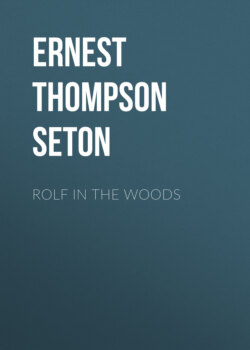Читать книгу Rolf in the Woods - Ernest Thompson Seton - Страница 4
Preface
ОглавлениеIn this story I have endeavoured to realize some of the influences that surrounded the youth of America a hundred years ago, and made of them, first, good citizens, and, later, in the day of peril, heroes that won the battles of Lake Erie, Plattsburg, and New Orleans, and the great sea fights of Porter, Bainbridge, Decatur, Lawrence, Perry, and MacDonough.
I have especially dwelt in detail on the woodland and peace scouting in the hope that I may thus help other boys to follow the hard-climbing trail that leads to the higher uplands.
For the historical events of 1812–14, I have consulted among books chiefly, Theodore Roosevelt's “Naval War of 1812,” Peter S. Palmer's “History of Lake Champlain,” and Walter Hill Crockett's “A History of Lake Champlain,” 1909. But I found another and more personal mine of information. Through the kindness of my friend, Edmund Seymour, a native of the Champlain region, now a resident of New York, I went over all the historical ground with several unpublished manuscripts for guides, and heard from the children of the sturdy frontiersmen new tales of the war; and in getting more light and vivid personal memories, I was glad, indeed, to realize that not only were there valour and heroism on both sides, but also gentleness and courtesy. Histories written by either party at the time should be laid aside. They breathe the rancourous hate of the writers of the age—the fighters felt not so—and the many incidents given here of chivalry and consideration were actual happenings, related to me by the descendants of those who experienced them; and all assure me that these were a true reflex of the feelings of the day.
I am much indebted to Miss Katherine Palmer, of Plattsburg, for kindly allowing me to see the unpublished manuscript memoir of her grandfather, Peter Sailly, who was Collector of the Port of Plattsburg at the time of the war.
Another purpose in this story was to picture the real Indian with his message for good or for evil.
Those who know nothing of the race will scoff and say they never heard of such a thing as a singing and religious red man. Those who know him well will say, “Yes, but you have given to your eastern Indian songs and ceremonies which belong to the western tribes, and which are of different epochs.” To the latter I reply:
“You know that the western Indians sang and prayed in this way. How do you know that the eastern ones did not? We have no records, except those by critics, savagely hostile, and contemptuous of all religious observances but their own. The Ghost Dance Song belonged to a much more recent time, no doubt, but it was purely Indian, and it is generally admitted that the races of continental North America were of one stock, and had no fundamentally different customs or modes of thought.”
The Sunrise Song was given me by Frederick R. Burton, author of “American Primitive Music.” It is still in use among the Ojibwa.
The songs of the Wabanaki may be read in C. G. Leland's “Kuloskap the Master.”
The Ghost Dance Song was furnished by Alice C. Fletcher, whose “Indian Song and Story” will prove a revelation to those who wish to follow further.
ERNEST THOMPSON SETON.
